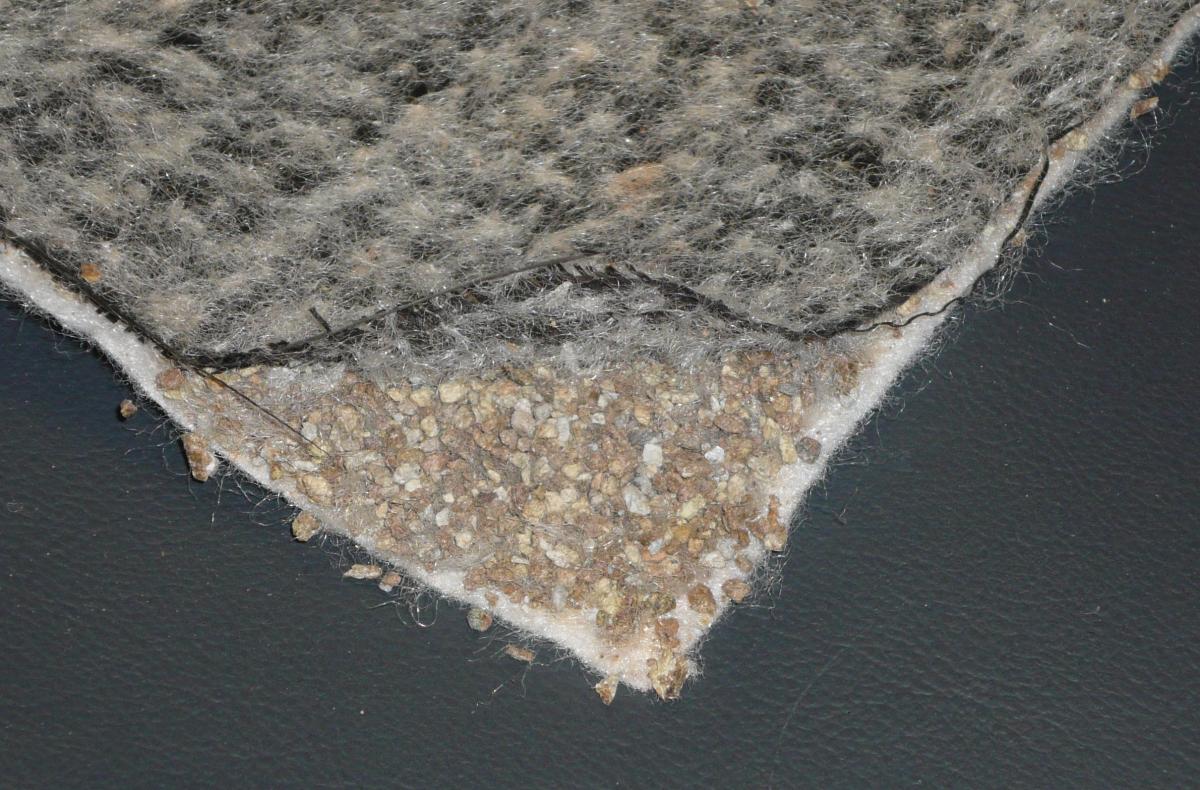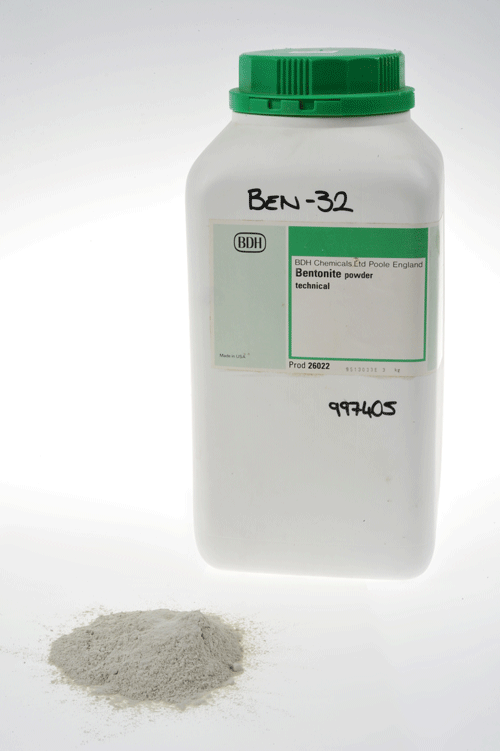Bentonite is defined as a naturally occurring material that is composed predominantly of the clay mineral smectite. Most bentonites are formed by the alteration of volcanic ash in marine environments and occur as layers sandwiched between other types of rocks. The smectite in most bentonites is the mineral montmorillonite, which is a dioctahedral smectite but occasionally other types of smectite may be present. It is the presence of smectite which imparts the desirable properties to bentonites, although associated factors such as the nature of the exchangeable cations in the interlayer also affect properties. For example naturally occurring bentonites with Na+ as the interlayer cation can have very different properties to bentonites where the interlayer cation is Ca++. Most commercial bentonites contain more that 80% smectite, however, a wide variety of other minerals may occur as impurities. The image on this page shows a geosynthetic liner with bentonite granules as fill.


- Hillier, S. and Lumsden, D., 2008, Distinguishing opaline silica from cristobalite in bentonites: a practical procedure and perspective based on NaOH dissolution, Clay Minerals, 43, 477-486.


